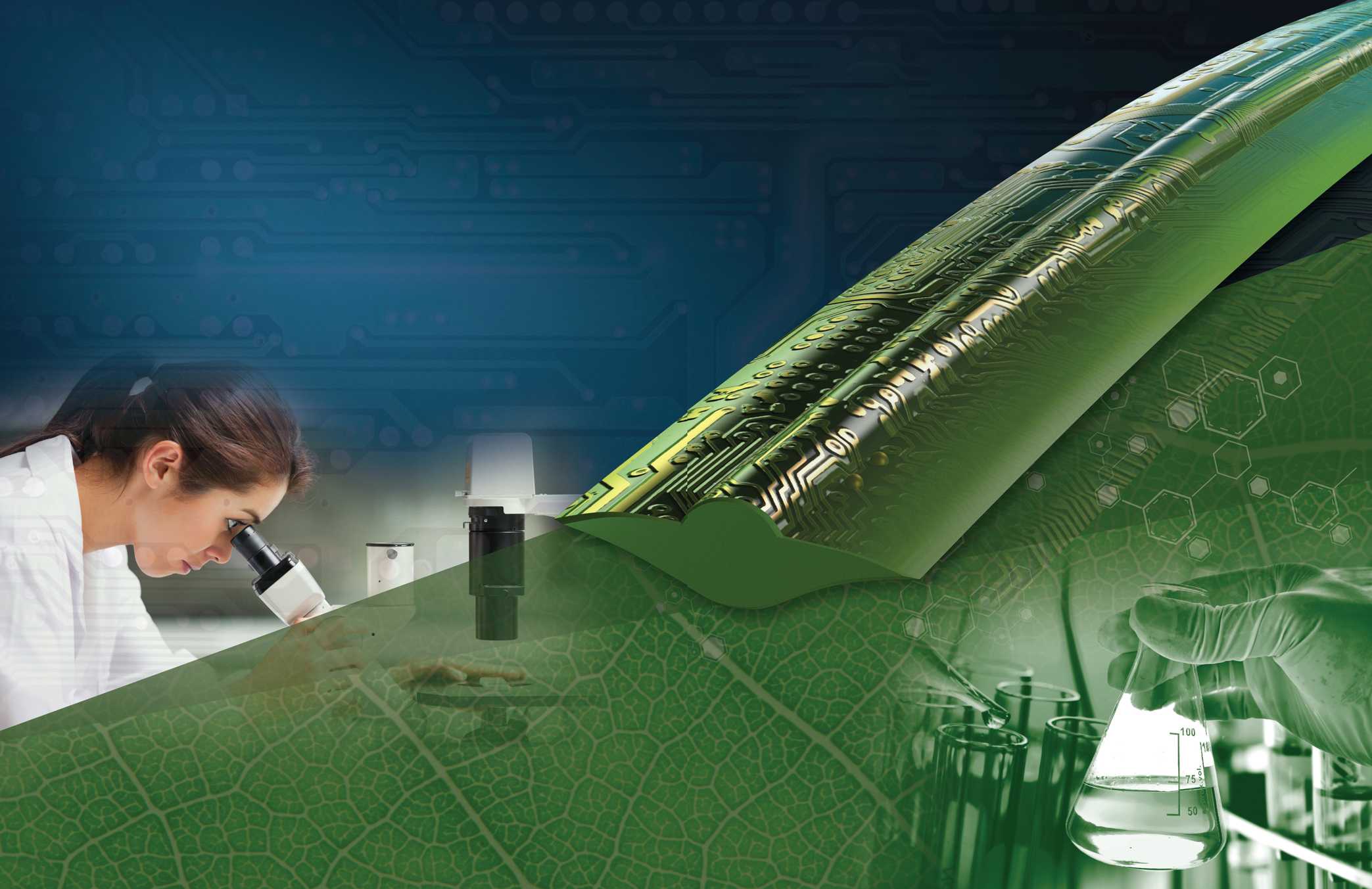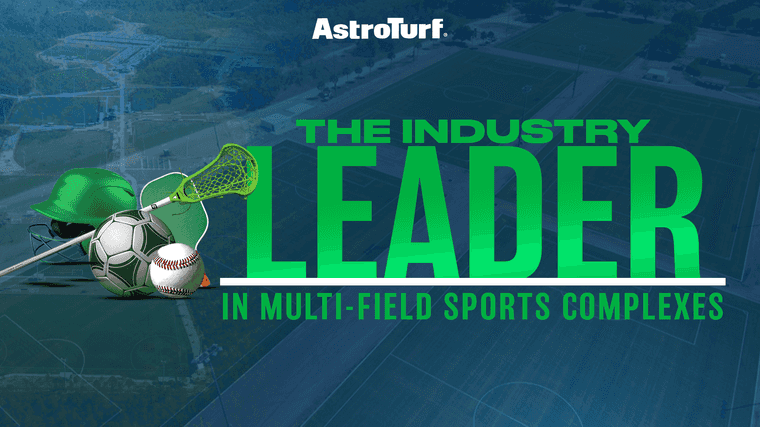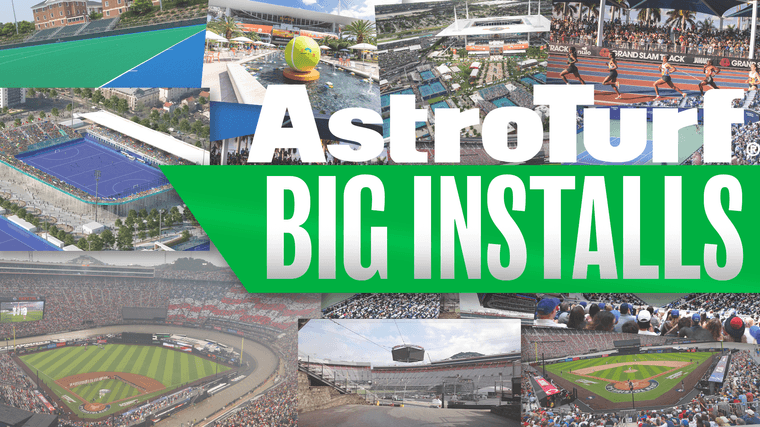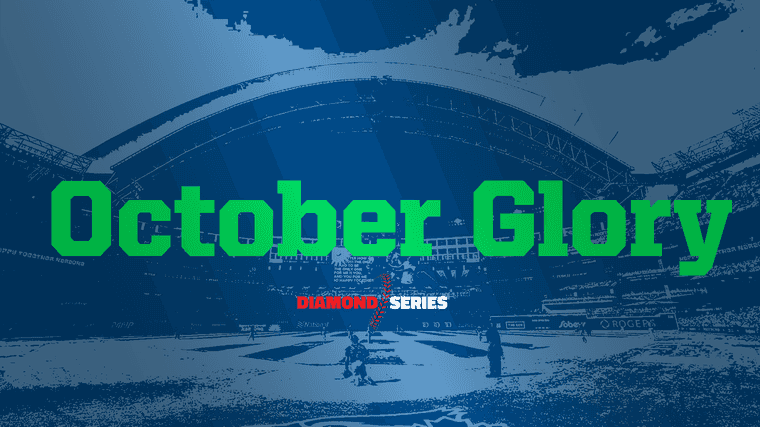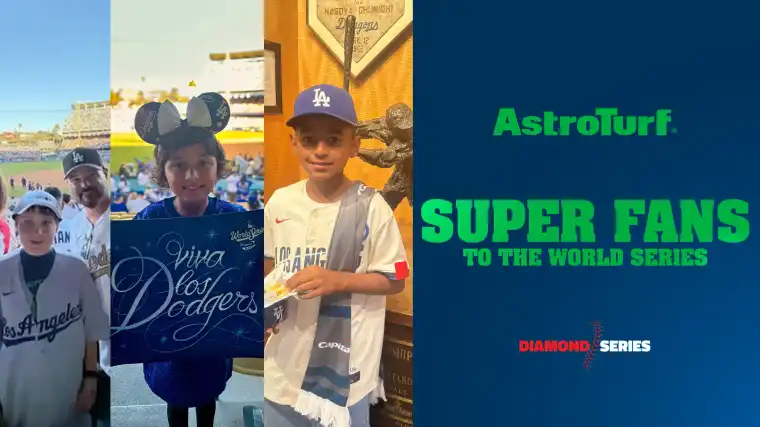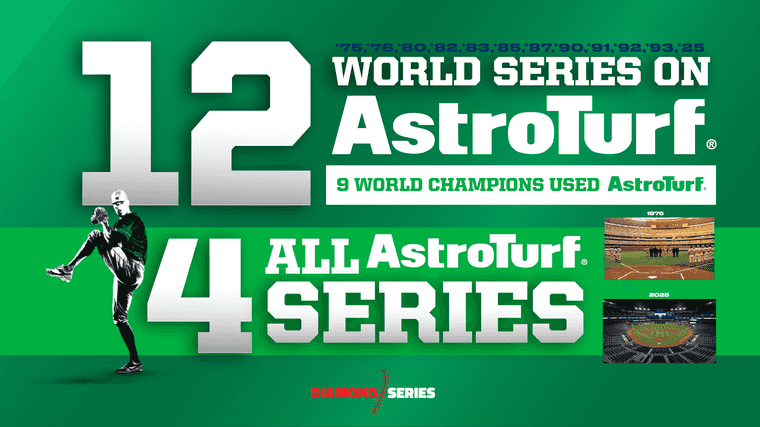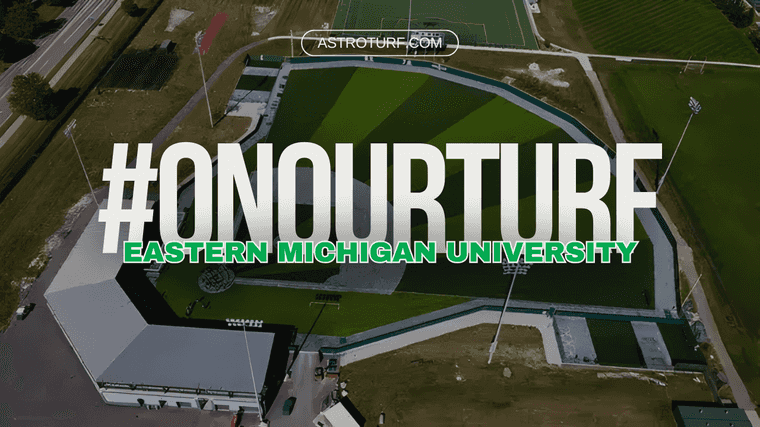Durability is critical on a synthetic turf field. You’ve got to know that your investment is protected for the long haul.
Ensuring field longevity in the face of inherent obstacles is paramount. Synthetic turf fields sit under the sun, exposed to the elements for years. They get beat up by players and equipment. And often they are subjected to practice in the same spots day after day, year after year.
AstroTurf is devoted to giving our customers the biggest bang for their buck while preserving the non-abrasive playability that athletes love. We all know that the all-nylon, short pile AstroTurf of yore could last 20 years, but no one wants to fall on it. The trick is to balance durability with comfort!
Walkthrough the various innovations and services we provide to lengthen the lifecycle of your field.
The Problem:
Infill moves/migrates with play.
Infill is used in third–generation turf systems to hold up fibers and reduce impact between the player and the surface. The trouble is that infill moves. It gets kicked out and migrates from the highest used areas to the least used areas of the field. That leaves an uneven playing surface, and the areas that get thin (i.e., the areas that have lost infill) are more susceptible to damage from UV and cleats.
The Goal:
Infill migration can prematurely age fields and can lead to early replacement.
You need a field with infill levels that are as consistent as possible.
The Industry’s Solution:
Other turf companies rely exclusively on maintenance to address this issue— if they even acknowledge it.
AstroTurf’s Solution:
There’s no doubt that maintenance is crucial to keeping infill levels even. However, using a RootZone helps reduce the amount of maintenance needed and keeps the infill more uniform between groomings. The RootZone’s crimped fibers hold infill in place and support taller pile fibers.
RootZone — an innovation to stabilize the rubber infilled systems.
When fibers remain upright, the tips of the fibers are exposed to UV light and cleats, thereby subjecting less of the fiber’s surface area to the sun’s harmful rays and wear and tear. The result is a longer-lasting field.
The Problem:
Players love polyethylene (PE) fibers. They’re soft to fall and slide on. The only problem is that they are lazy. That is, their chemistry (specifically their Glass Transition Temperature) dictates that their molecules become more fluid at ambient temperatures, so the fibers tend to lay over unless they are propped up by other materials.
The Goal:
We want to keep the fibers upright so that UV exposure and cleat interaction are concentrated on the tips of the fibers, so less surface area is susceptible to damage. The longer the tall pile fibers stand upright, the longer the life of the field.
The Industry’s Solution:
For years, fiber and turf manufacturers have used various shapes to help monofilament fibers stand upright. These have worked to varying degrees of success.
Our LEGEND monofilament polyethylene fibers feature a shape similar to a UFO.
Our polymer chemistry and in-house masterbatch formulation make the real difference.
AstroTurf’s Solution:
We’ve shifted our focus from shape alone to size, shape, and chemistry.
Our LEGEND monofilament polyethylene fibers feature a shape similar to a UFO. The Legend fibers refract light for a natural look and are 330 microns thick. Special features that go into fiber engineering and production really set our fibers head and shoulders above the industry.
Masterbatch — Our polymer chemistry and in-house masterbatch formulation make the real difference. To our knowledge, no other turf manufacturer takes back the chain of control to this critical step. The masterbatch is like the DNA of the fibers. Masterbatch is the “special sauce” that contains the UV stabilizers, color, heat resistance and other critical factors that influence the performance of the fibers. SportGroup’s masterbatch formulations were developed in Germany by some of the world’s foremost polymer chemists, who are directly employed by the SportGroup. The masterbatch formulation is consistent across the globe for all SportGroup turf fibers.
Entanglement Technology
Entanglement Technology — Our dedicated chemists have leveraged Entanglement Technology to further reinforce the fiber. Every polyethylene molecular structure contains a main molecule chain, with side chains that branch out. As fibers are made, the resin and masterbatch pellets are melted down, extruded, and stretched. As the newly made fiber is stretched, those main molecular chains are lengthened along the direction they are stretched. This creates long molecular chains that run parallel to one other along the length of the fiber. In most fibers, with UV exposure and use, this lends itself to splitting lengthwise down the shaft of the fiber.
To prevent splitting of the fiber, we entangle the side chains to reinforce any weak spots that would form between the main molecular chains.
TRIONIC Fiber Technology — From its earliest inception until the 1990s, nylon was used nearly across the board for its superior resilience and strength. But the downside of all nylon fibers was well known. It was abrasive. In the 1990s, PE came into vogue and became the industry standard for tall pile face fibers. These PE fibers were much less abrasive, but they came at a cost – they sacrificed the strength that previous generations of turf fields offered…Until now.
AstroTurf now offers the TRIONIC fiber. This patent-pending development is a feat of chemical engineering never before achieved in the history of our industry. TRIONIC combines player-friendly and non-abrasive PE with ultra-durable nylon using specialized molecular compatibilizers to unite the PE and nylon polymers, which ordinarily repel each other. The result is the ultimate fiber. It’s a durable, attractive monofilament, and it’s a game-changer.
Better, stronger, Trionic. Finally, molecular fusion of nylon and polythylene.
The Problem:
Loose inlay at the seam.
Joints (i.e., seams and inlays) are the weakest points for synthetic turf. When you have to join two pieces of turf together, the bond can break, causing loose seams and field markings. That can not only be unsightly but can pose tripping hazards as well.
The Goal:
Ten years after installation, we’d like your field to look and perform as much as it did at installation as possible. The happier our customers are, the happier we are and the fewer callbacks we get.
The Industry’s Solution:
Some turf companies sew seams, some glue. Both of these technologies are fine, but they have both have their drawbacks and they’ve been done since the beginning of turf.
AstroTurf’s Solution:
AstroFusion Seaming — no glue needed. Pre-metered adhesive and automated cart help eliminate the variables on site, for long lasting, virtually invisible seams!
Seaming — While AstroTurf sews our entry level turf seams, we have pioneered a revolutionary seaming method for our premium systems. Known as AstroFusion, this seaming method involves a hot-melt adhesive system using spun-bond polyester. The adhesive is contained on a pre-metered roll. By applying heat from a self-propelled cart, the heat transfers evenly into the adhesive and activates it, providing a more consistent, durable seam. The automation and uniformity of the AstroFusion process create seams that are virtually invisible.
PreFabricated Inlaying — AstroTurf is the only company that provides prefabricated inlaying for football lines. With PreFab, we have trained installers inlay your field upside down from the back of the turf (for more precision) using a jig system installed on the floor of our climate-controlled inlaying facility. Your field is delivered with about 90% of the hundreds of required inlays already assembled. This dramatically reduces callbacks, speeds up installation time and allows our onsite installers to pay even closer attention to the finishing touches. We feel so strongly about PreFab that it is one of the requirements of our 3D Decade systems that come with ten–year warranties!
The Problem:
Without question, the biggest enemy of artificial turf is ultraviolet light. Without properly protecting the turf, the sun’s rays can beat down on the surface and break down the fibers, leaving you with a pile of unplayable infill.
The Goal:
We’ve got to protect the turf from the sun to ensure it lasts as long as possible. We fully warranty all of our products against premature UV degradation for a minimum of 8 years, so it’s in our best interest and yours to ensure that our fields stand up against the sun’s rays.
The Industry’s Solution:
Like AstroTurf, the rest of the industry uses UV stabilizers in their fibers. That is a minimum requirement of any turf manufacturer!
Our polymer chemistry and in-house masterbatch formulation make the real difference.
AstroTurf’s Solution:
Masterbatch — Our polymer chemistry and in-house masterbatch formulation make the real difference. To our knowledge, no other turf manufacturer takes back the chain of control to this critical step. The masterbatch is like the DNA of the fibers. Masterbatch is the “special sauce” that contains the UV stabilizers, color, heat resistance and other critical factors that influence the performance of the fibers. SportGroup’s masterbatch formulations were developed in Germany by some of the world’s foremost polymer chemists, who are directly employed by the SportGroup. The masterbatch formulation is consistent across the globe for all SportGroup turf fibers.
Entanglement Technology — Our dedicated chemists have leveraged Entanglement Technology to further reinforce the fiber. Every polyethylene molecular structure contains a main molecule chain, with side chains that branch out. As fibers are made, the resin and masterbatch pellets are melted down, extruded, and stretched. As the newly made fiber is stretched, those main molecular chains are lengthened along the direction they are stretched. This creates long molecular chains that run parallel to one other along the length of the fiber. In most fibers, with UV exposure and use, this lends itself to splitting lengthwise down the shaft of the fiber.
Entanglement Technology
To prevent splitting of the fiber, we entangle the side chains to reinforce any weak spots that would form between the main molecular chains.
Testing & QC — AstroTurf has one of the world’s pre-eminent sports labs. Every fiber used in our systems is rigorously tested by exposure to high UV levels for months in our QUV machines.
RootZone — Another way that we minimize UV exposure to fibers in the field is through our RootZone technology. The crimped layer of fibers holds infill in place and holds taller pile fibers upright. When fibers are held upright, the tips of the fibers (not the sides) are exposed to UV light, thereby subjecting less of the fiber’s surface area to the sun’s harmful rays and lengthening your investment.
The Problem:
Wear and tear is the second biggest threat to your field. The very reason that people go for synthetic turf is to hold more athletic events! While all synthetic turf is more durable than natural grass, it is not invincible. Maintenance is key, as is product selection on the front end.
The Goal:
AstroTurf wants to ensure that your field ages in a consistent, even pattern, as slowly as possible. AstroTurf consultants are trained to guide you through the process of turf product selection, and will help inform you about the technologies and systems available that will help you balance your budget with system longevity.
The Industry’s Solution:
Some manufacturers act like one fiber or one system fits all. It usually happens to be their latest fiber or newest spin.
AstroTurf’s Solution:
Every fiber we sell is tested, proven, and trusted.
Overall Manufacturing Philosophy — AstroTurf, over the last 50 years, has seen that the longest-lasting systems are dense systems packed with fiber. It just makes sense – if we provide you twice as much fiber to start with, you’ll be in better shape down the road. (Keep in mind that fields never are replaced because the infill wears out – only because the fiber wears out!) This guides our “more fiber, less fill” approach to manufacturing. We give you more fiber on the front end.
RootZone Technology — Because the RootZone layer of crimped fibers holds the infill in place, wear on the field is more uniform. Plus, you don’t have to do the same level of aggressive maintenance to even up the infill. Those deep tine decompaction processes and heavy brushing can cause undue wear and tear to fibers.
Fiber Selection — All of our systems incorporate masterbatch formulations that are created in-house for the strongest fibers on the market. This masterbatch is then used to create a variety of fibers – Legend monofilament PE fibers, high durability slit film fibers, texturized RootZone fibers, and even the latest TRIONIC fibers which blend nylon and PE into a single co-polymer. This wide range of fiber selections allows you to choose a fiber or fibers that fit your needs and budget.
Maintenance — As part of every closeout process, AstroTurf will train you how to maintain your field for optimal performance over time. Best maintenance practices can be found in our Owner’s Manual, and we offer customized, annual maintenance packages to help your field outlast the warranty. We have customer service specialists on call to answer your questions about maintenance.
